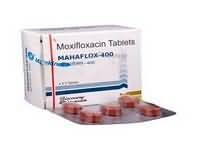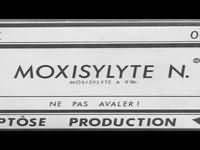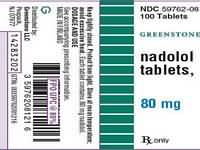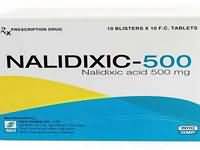Amiloride hydrochloride

Amiloride hydrochloride
CLINICAL USE
Oedema
Potassium conservation with thiazide and
loop diuretics
DOSE IN NORMAL RENAL FUNCTION
5–10 mg daily; maximum 20 mg daily
PHARMACOKINETICS
Molecular weight :
302.1
%Protein binding :
30–40
%Excreted unchanged in urine :
50
Volume of distribution (L/kg) :
5
half-life – normal/ESRD (hrs) :
6–20/100
DOSE IN RENAL IMPAIRMENT
GFR (mL/MIN)
20 to 50 : Use 50% of dose
10 to 20 : Use 50% of dose
<10 :
Avoid
DOSE IN PATIENTS UNDERGOING RENAL REPLACEMENT THERAPIES
CAPD :
Not applicable. Avoid
HD :
Not applicable. Avoid
HDF/high flux :
Not applicable. Avoid
CAV/VVHD :
Unknown dialysability. Dose as in
GFR 10 to 20 mL/min
IMPORTANT DRUG INTERACTIONS
Potentially hazardous interactions with other drugs
ACE inhibitor and angiotensin-
II antagonists: increased risk of
hyperkalaemia and hypotension
Antibacterials: avoid concomitant use with
lymecycline
Antidepressants: increased risk of postural
hypotension with tricyclics; enhanced
hypotensive effect with MAOIs
Antihypertensives: enhanced hypotensive
effect
Ciclosporin: increased risk of
hyperkalaemia and nephrotoxicity
Lithium excretion reduced
NSAIDS: increased risk of hyperkalaemia;
increased risk of nephrotoxicity;
antagonism of diuretic effect
Potassium salts: increased risk of
hyperkalaemia
Tacrolimus: increased risk of
hyperkalaemia
ADMINISTRATION
Reconstition
–
Route
Oral
Rate of Administration
–
Comments
–
OTHER INFORMATION
Monitor for hyperkalaemia
Greatly increased risk of hyperkalaemia in
patients with a GFR<30 mL/min, especially
in diabetics
Increased risk of hyperchloraemic
metabolic acidosis in patients with
reduced GFR
Bioavailability is 50% and can be reduced
by administering with food
Reduced natriuretic effect once the
GFR<50 mL/min
Diuretic effect starts 2 hours after
administration, peaks after 6–10 hours
and can last up to 24 hours
See how to identify renal failure stages according to GFR calculation
See how to diagnose irreversible renal disease
Home









